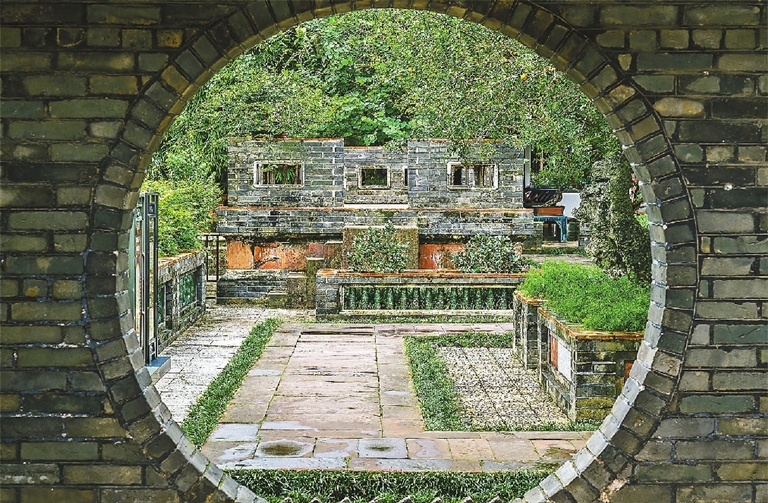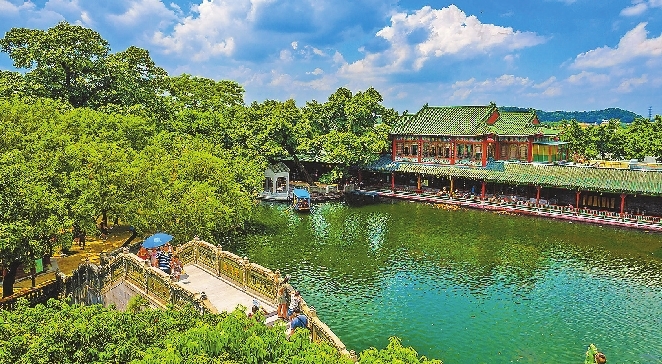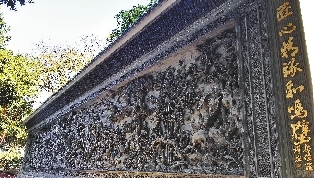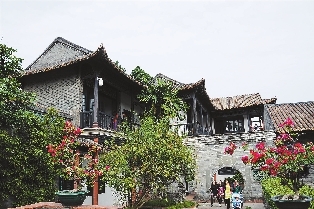



RECENTLY, the Chinese historical drama “Story of Yanxi Palace” went viral online, shattering viewership records. Set during the Qing Dynasty (1644-1911), the show follows the story of an imperial court maid who manages to become one of the Emperor Qianlong’s favorite concubines. The drama, with its intricate settings and delicate costume designs all based on historical fact, has probably piqued your interest, making you wish you could travel back in time to the era of the drama to experience it for yourself. The good news is that you can experience the ancient charm of the Qing Dynasty in the poetic gardens of Guangdong. Ke Garden in Dongguan Originally built in 1850, the 30th year of the reign of Emperor Daoguang in the Qing Dynasty, Ke Garden was built with blue bricks by Zhang Jingxiu, a deposed military officer. Predecessors praised it as “a blessed place on earth, a garden comparable to a fairyland.” The garden is also one of the four most famous gardens from the Qing Dynasty in Guangdong Province. Covering an area of 2,204 square meters, the garden is not large, but it is exquisite and enjoyable by artistically combining living rooms, bedrooms, gardens, villas, yards, studies, corridors and pavilions. The garden is home to dozens of traditional buildings, pavilions, ponds, bridges, halls and rooms. The whole complex was built with wood and bricks, with delicate and elegant carvings on the windows, doors and handrails. Nestled against a mountain, the garden is endowed with fresh air. Walking inside, you will be embraced by the sweet fragrance of osmanthus basically everywhere. Like other gardens in South China, the buildings, the flowers, the hills and the lakes in the Ke Garden blend with the surroundings harmoniously. Add: No. 32, Keyuan Road, Guancheng, Dongguan 东莞市莞城可园路32号 Tickets: 8 yuan Hours: 9 a.m.-5:30 p.m.; closed on Tuesdays Transport: Take a train from Shenzhen Railway Station to Dongguan Railway Station, then take Metro Line 2 to Qifeng Park Station. Transfer to Line x6 and get off at Ke Garden (Keyuan). Baomo Garden in Guangzhou Built at the end of the Qing Dynasty, Baomo Garden was an extension of the Temple of Lord Bao Zheng located to the east of the garden. The garden now covers an area of 168 mu (100,000 square meters). Bao was a government officer during the reign of Emperor Renzong in the Song Dynasty (960-1279). During his 25 years in civil service, Bao consistently demonstrated extreme honesty and uprightness through his actions, such as sentencing his own uncle to prison, impeaching an uncle of Emperor Renzong’s favorite concubine and punishing powerful families. The original garden was destroyed in the 1950s. Reconstruction work began in 1955 and lasted for eight years. After four phases of construction, the garden has been turned into an exemplar South China garden featuring Lord Bao’s heritages, ancient Lingnan architecture, and the familiar and picturesque features of a Pearl River Delta water town. There is a splendid water scenery inside the verdant garden. Lijing Bay, Qingping Lake and Baomo Lake all connect with the 1,000-meter river. The water here is as crystal-clear as a mirror. The garden houses an array of art works including pottery sculptures, porcelain sculptures, brick sculptures, stone carvings and wood carvings, which can be seen everywhere. Among them, the most amazing piece is the porcelain inverse relief “Qingming Festival by the Riverside,” which has been added to the Guinness Book of World Records. The bronze statue of Confucius is exhibited in the Treasure Pavilion on Litchi Island for visitors to worship. Add: Zini Village, Shawan Town, Panyu District, Guangzhou 广州市番禺区沙湾镇紫坭村 Tickets: 40 yuan Hours: 8:30 a.m.-5:30 p.m. Transport: Take a high-speed train from Shenzhen North Railway Station to Guangzhou South Railway Station. Then take Metro Line 7 to Hanxi Changlong Station, and transfer to Metro Line 3 to Shiqiao Station. Go out at Exit B, and then take bus Pan 67 from Baiyue Square West to Baomo Garden terminal. (Chen Xiaochun) | 
